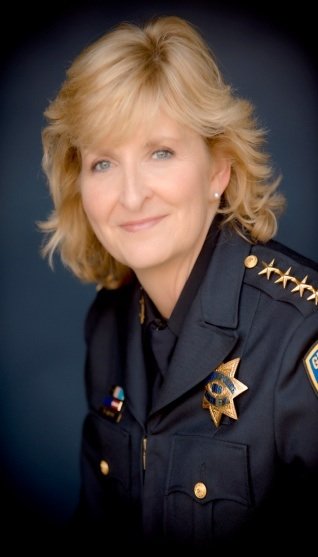The City of Gilroy is making strides with its 15-step plan to address homelessness in the community, including seeking grant funding to house some of the long-term homeless and purchasing locks to install on the doors to restrooms in public parks, according to Gilroy Police Chief Denise Turner.
With the help of City Administrator Tom Haglund, Turner is seeking grant funding from Santa Clara County to kick-start a pilot project in Gilroy called “Hardest to House” that could provide homes for 20 chronically homeless individuals in South County over the course of two years.
“They’re the frequent fliers –through the criminal justice system, medical system and the emergency psychiatric services system – and they don’t necessarily belong there,” Turner noted. “They belong in homes with services so they can become productive members of our society.”
Every year, Turner said, the GPD encounters more than 350 people in crisis – including many homeless – who are subsequently transferred to San Jose via ambulance to receive county-funded emergency psychiatric services.
“The cases stem from calls for service for people in mental health crisis or attempting suicide,” Turner explained. “The officers make the assessment from their investigation and then we call the Gilroy Fire Department to screen for medical issues.”
If the County helped pay for a mobile South County Crisis Response Team that includes mental health professionals who respond alongside the GPD to calls involving a homeless person in crisis, “that would be ideal,” she posits.
“They could actually triage a situation, determine what the issues are and get them connected to services – whether it’s medication or commitment into a facility,” she added. “That would take the onus off (the GPD), our fire department, Rural/Metro Ambulance for transport and the medical system.”
Additionally, the County and Gilroy-based social services nonprofit Community Solutions are interested in potentially purchasing property in San Martin to establish South County’s first emergency psychiatric service center that would be open 24-hours a day, according to Turner.
“That would mean we could take individuals from Gilroy to this South County center,” she said, explaining that they could respond to each individual crisis and provide hospital beds for those who need to be stabilized for serious mental health issues.
Also worth noting, on Jan. 2, the first step in Turner’s 15-step plan took effect: An amendment to City Code that restricts the consumption of alcohol in public parks to a permit-only basis. City Council approved the ordinance last year, which requires residents to pay for a reservation in order to drink alcohol in Gilroy’s parks.
The GPD also received “numerous” complaints about transients loitering at the Monterey Street train station, according to Turner. With the assistance of Caltrain, “no loitering” signs were placed on nearby buildings and a portable toilet was removed from the parking lot.
City staffers are also currently looking to purchase locks for public restrooms in Gilroy’s parks to prevent them from becoming havens for illegal activity after dark, according to Turner. She expects the old handles will be changed out and the new locks will be retrofitted some time this year.
Turner also outlined an issue in the downtime between the operating hours of the city’s seasonal cold weather shelter, and another local shelter that is open in the morning. Police were increasingly encountering unsheltered individuals walking the streets between 6 a.m. and 8 a.m. during the winter, Turner noted. At the strike of 6 a.m. each morning, overnight guests at the Gilroy Armory, an emergency cold weather shelter and support center, have to leave the premises.
The Gilroy Compassion Center – a nonprofit organization near Monterey and Leavesley roads that provides daytime outreach services for South County’s needy – traditionally opens its doors at 8 a.m. and recently recruited enough volunteers to open the center two hours earlier.
“The Compassion Center also raised donations to provide food and coffee during the coldest times of the morning,” Turner added. “This provided much needed warmth and respite for the homeless in Gilroy.”
-47: The number of illegal encampments cleared within City limits
-446: Calls that Gilroy Police responded to for service involving a homeless person
-28: Percent of suspects given warnings
-20: Percent of the time police could not locate the suspects
-14: Percent that involved an arrest of the suspect
-2: Percent of suspects who were referred to services
Source: GPD Chief Denise Turner















